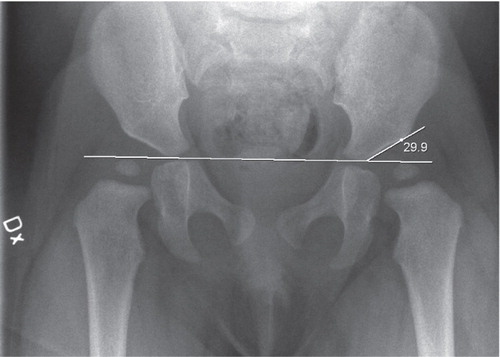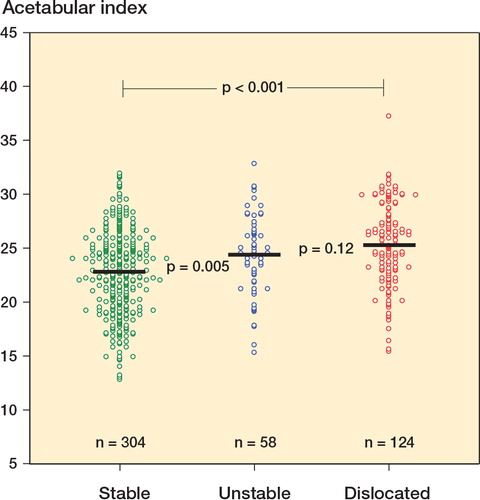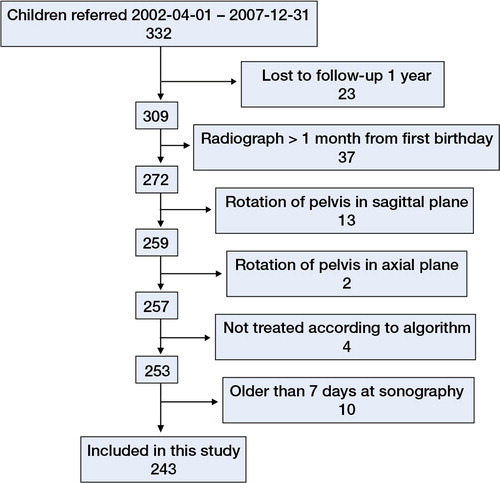Figures & data
Figure 1. Example of an AI measurement at 1 year on the left side of a girl treated for bilateral neonatal dislocation (Barlow-positive).

Figure 3. The incidence of NIH in Malmö during the study period. 15‰ of all children born in Malmö were referred because of suspected NIH. 5‰ had a dislocated hip. 2‰ had an unstable hip. 8‰ had bilaterally stable hips. This is comparable to previously published data from 1990–97 (Danielsson Citation2000). Numbers in parentheses denote the percentage of girls in each group.

Figure 4. The mean AI at 1 year was higher for dislocated hips (25.3, 95% CI: 24.6–26.0) and unstable hips (24.3, CI: 23.3–25.3) than for stable hips (22.7, CI: 22.3–23.2). Each circle represents an individual hip. p-values for the comparisons are given.

